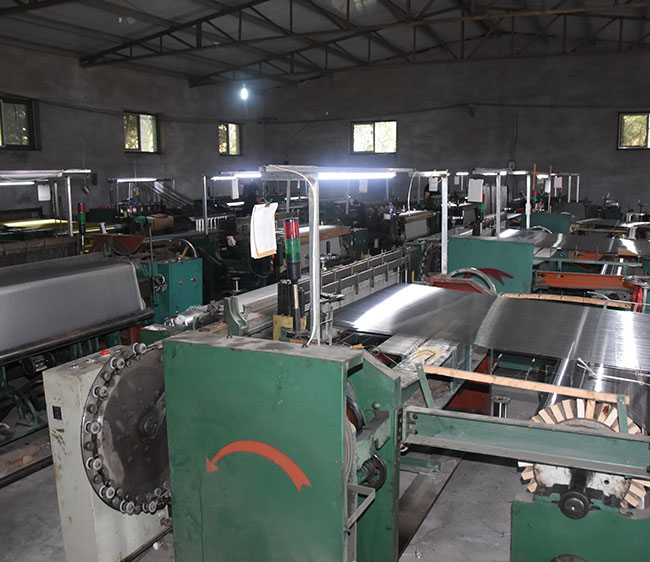des . 07, 2024 01:42 Back to list
316 stainless wire mesh
The Versatility and Applications of 316 Stainless Steel Wire Mesh
When it comes to industrial applications that require durability, corrosion resistance, and strength, 316 stainless steel wire mesh stands out as a premier choice. This specialized type of wire mesh is made from a high alloy of stainless steel, which includes molybdenum, giving it enhanced performance properties over other types, such as 304 stainless steel. In this article, we will explore the features, benefits, and applications of 316 stainless steel wire mesh.
Composition and Properties
316 stainless steel wire mesh is composed primarily of 16% chromium, 10% nickel, and 2% molybdenum. This unique composition provides the wire mesh with superior corrosion resistance, particularly against chlorides and other harsh chemicals. The addition of molybdenum is crucial as it helps to prevent pitting and crevice corrosion, making 316 wire mesh an excellent material for marine environments and chemical processing industries.
In terms of mechanical properties, 316 stainless steel wire mesh exhibits excellent tensile strength and durability. It can withstand high temperatures and is also resistant to oxidation, which further enhances its longevity and reliability in challenging industrial conditions.
Benefits of 316 Stainless Steel Wire Mesh
1. Corrosion Resistance As mentioned, the corrosion resistance of 316 stainless steel is one of its most significant advantages. It can resist rust and degradation when exposed to harsh elements like saltwater, making it ideal for outdoor and marine applications.
2. High Temperature Resistance 316 stainless steel retains its strength even at elevated temperatures, making it suitable for high-temperature applications such as filtration in various industrial processes.
3. Versatility The adaptability of 316 stainless steel wire mesh allows it to be fabricated into various forms, including different mesh sizes, shapes, and wire diameters, catered to specific needs.
4. Aesthetic Appeal In addition to its functional benefits, 316 stainless steel has a bright, shiny finish that contributes to a clean and professional appearance, making it suitable for architectural and decorative applications.
316 stainless wire mesh

Applications of 316 Stainless Steel Wire Mesh
The applications of 316 stainless steel wire mesh are extensive across multiple industries due to its superior properties. Some notable applications include
1. Marine Applications Given its excellent corrosion resistance, 316 wire mesh is commonly used in saltwater environments, like boat railings, mesh decks, and underwater installations.
2. Filtration In the food and beverage, chemical, and pharmaceutical industries, 316 stainless steel wire mesh is often utilized for filtration applications, including liquid filtration and gas filtration, due to its ability to withstand various chemicals and temperatures.
3. Architectural Uses With its aesthetic appeal, 316 stainless steel wire mesh is often employed in architectural designs, such as facades, balustrades, and decorative wall panels.
4. Industrial Equipment 316 stainless steel wire mesh is frequently used in various industrial equipment, including sieves, screens, and conveyor systems, where strength and durability are paramount.
5. Aquaculture In fish farming and aquaculture systems, 316 stainless steel wire mesh is used for tanks and enclosures, as it withstands corrosive marine environments and contributes to the health of aquatic life.
6. Food Processing The non-reactive nature of 316 stainless steel makes it suitable for food processing applications, where hygiene and the prevention of contamination are critical.
Conclusion
316 stainless steel wire mesh is a remarkable material that combines strength, durability, and corrosion resistance, making it suitable for a wide range of applications across various industries. Its adaptability and superior properties make it a preferred choice for engineers and manufacturers looking for reliable solutions in challenging environments. As industries continue to evolve, 316 stainless steel wire mesh will undoubtedly remain a vital component in meeting the demands of modern applications, proving itself to be an indispensable material in both industrial and decorative contexts.
share
-
CE Certified 250 Micron Stainless Steel Mesh for Precision & Durability
NewsAug.26,2025
-
CE Certified 250 Micron Stainless Steel Mesh for Precision & Durability
NewsAug.25,2025
-
Premium CE Certified Metal Fine Mesh for Precision & Safety
NewsAug.24,2025
-
Stainless Steel Wedge Wire Mesh: Durable, Precision Filtration
NewsAug.23,2025
-
CE Certified 250 Micron Stainless Steel Mesh for Precision Filtration
NewsAug.22,2025
-
CE Certified 250 Micron SS Mesh - Precision Filtration & Strength
NewsAug.21,2025

